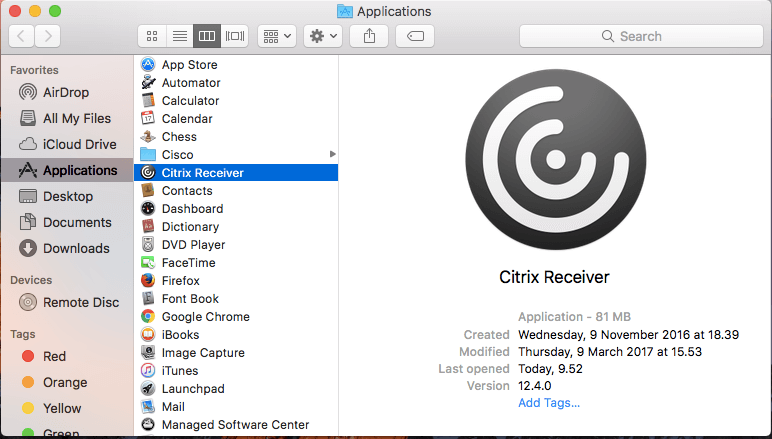Chris Hahn sent over this quick tip on how to correct sound issues occurring in a Citrix ICA session running Google Chrome.
This video tutorial demonstrates how to add the Citrix Workspace ADD ON to the Chrome Browser. It's an easy alternative to the standard installation, but ma. Search for Citrix Workspace, and select Apps 3. Click “Add to Chrome” by the Citrix Workspace app that says it is “Offered by: Citrix” You will be prompted to confirm you want to add the app, click “Add app”. Go to the below page and click on the “Add to Chrome” for the Citrix Workspace App Chrome Extension. Chrome Extension for Citrix Workspace App. Remember, this extension is the official Citrix provided extension. But it will not work in any other Chromium-based browser e.g. Citrix Workspace app is a new client from Citrix that works similar to Citrix Receiver and is fully backward-compatible with your organization’s Citrix infrastructure. Citrix Workspace app provides the full capabilities of Citrix Receiver, as well as new capabilities based on your organization’s Citrix deployment.
Today at a client, we had an issue with a published application that had Google Chrome in it. If the user went to a website that had media (i.e. YouTube), the sound would be broken. No audio sound would play on the endpoint via ICA.
After a little digging around on Google, it seems that this is an issue with Google Chrome version 79 or later. The newest versions of Chrome have an Audio Sandbox feature enabled by default which breaks sound on XenApp.
In order to resolve this issue, you can do one of three workarounds:
Edit the registry on the XenApp server (or Horizon/XenDesktop Desktop):

Chromium based Microsoft Edge users
The same DWORD can be added to HKEY_LOCAL_MACHINESoftwarePoliciesMicrosoftEdge
or editing the shortcut that launches Google Chrome to add the following arguments.
Citrix For Chrome
or disable the feature using Group Policy. You can download the Google Chrome ADMX templates here. Then navigate to Google -> Google Chrome -> Allow the audio sandbox to run setting. Set the option to Disabled.
These workarounds will effectively disable the AudioSandbox for Google Chrome on the XenApp Server. This will most likely also affect VMware Horizon sessions too since the audio is being trapped in the sandbox and not relayed via the VDI protocols to the endpoint.

Enjoy the Music!
– Carlo
Related
It depends on how locked down you want to lock down the laptop. If its just kiosk mode you want, it's as simple as:
Add Citrix To Chrome App
1) Install Chrome (if not already on the laptop, install it).
2) Set Chrome's homepage to the URL for your storefront page.
3) Close Chrome and create a copy of its shortcut.
4) Right-click the new shortcut and add --kiosk to the end of the field (it should read '...chrome.exe' --kiosk' when done).
5) Drop this modified shortcut into the startup dir (you can open by - Win+R --> Shell:Startup)
When you log in now, Chrome will auto open, to the storefront page, in kiosk mode. To drop out of chrome, press al+F5.
NOTE: If you want to lock down the Laptop to the point that the OS is useless to EVERYONE save for those who know a backdoor password, it is possible but a bit more of a drawn-out faff. Let me know if you need the instuctions (they're for Win 7 but the process is the same).
I hope this helps.
